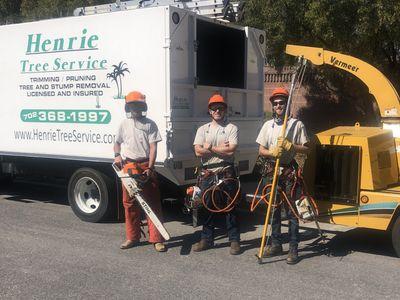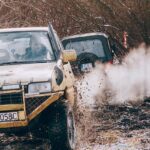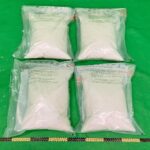Swift Response and Safety Measures in Tree Removal After Las Vegas Windstorm
Following the intense windstorm that swept through the Las Vegas Valley overnight, specialized tree service teams have been rapidly deployed throughout the area to manage the aftermath of fallen and damaged trees. These powerful gusts left debris scattered across streets and public spaces, disrupting traffic flow and raising safety concerns for local residents. As cleanup operations accelerate, crews are focused on eliminating hazardous limbs and restoring safe conditions on roadways and community areas. Authorities strongly advise the public to remain cautious while traveling and to promptly report any hazardous trees or unsafe conditions to municipal officials.
Rapid Deployment of Tree Service Crews to Mitigate Windstorm Impact
In response to the recent severe winds, multiple tree removal teams were immediately dispatched across the Las Vegas Valley to tackle widespread tree damage. These crews worked relentlessly throughout the day to safeguard public safety and reopen affected routes. Priority zones included major thoroughfares, residential neighborhoods, and public parks where fallen branches and unstable trees posed significant threats. Their swift action helped reduce the risk of secondary incidents such as power outages and traffic congestion.
Primary objectives for the crews encompassed:
- Clearing obstructive tree limbs from key roadways to ensure traffic flow
- Securing partially uprooted or leaning trees to prevent further collapse
- Removing debris from sidewalks and communal areas to enhance pedestrian safety
- Collaborating with utility providers to address electrical hazards caused by downed lines
| Area | Trees Removed | Teams Assigned | Total Hours Worked |
|---|---|---|---|
| North Las Vegas | 115 | 4 | 28 |
| Summerlin | 90 | 3 | 22 |
| Henderson | 75 | 2 | 18 |
| Downtown Las Vegas | 60 | 3 | 20 |
Obstacles Encountered During Debris Removal in Urban and Commercial Zones
Tree removal teams working in the aftermath of the windstorm face numerous challenges, especially when operating in densely populated residential and commercial districts. Maneuvering heavy equipment through narrow streets without causing property damage requires careful planning and precision. The unpredictable terrain, combined with intermittent strong gusts, complicates the stability of machinery and the safety of personnel. Additionally,coordinating access routes for large vehicles in busy commercial areas demands strategic scheduling to minimize disruption to local businesses.
Besides physical dangers, crews must manage a diverse array of debris types, from uprooted trunks to scattered branches and downed power lines, each requiring specialized handling and disposal methods. The urgency of the cleanup is amplified by the potential for further property damage and public safety risks, notably in high-traffic zones. Key challenges faced include:
- Worker Safety: Risks from falling branches, unstable debris piles, and volatile weather conditions.
- Traffic Control: Ensuring emergency vehicle access while clearing critical routes.
- Equipment Deployment: Utilizing machinery adapted for varied terrain while reducing environmental disturbance.
- Team Coordination: Maintaining seamless interaction among dispersed crews across the valley.
- Waste Management: Separating organic green waste from hazardous materials like damaged utility poles.
| Challenge | Effect | Countermeasures |
|---|---|---|
| Uneven and unstable ground | Higher likelihood of equipment mishaps | Use of aerial platforms and stabilized machinery bases |
| Traffic congestion | Delayed emergency response times | Close collaboration with law enforcement for traffic management |
| Large volume of debris | Slower clearance progress | Increasing workforce and extending operational shifts |
Critical Safety Practices and Tools for Effective Tree Removal
Ensuring the safety of tree removal crews during the cleanup of windstorm damage in Las Vegas is paramount. Workers are outfitted with essential protective gear including hard hats, safety goggles, gloves, and steel-toed boots to shield against falling debris and sharp objects. Only trained and certified operators handle chainsaws and heavy equipment, following strict protocols designed to reduce injury risks. High-visibility clothing and reliable communication devices such as two-way radios are standard to maintain team coordination in dynamic and perhaps hazardous environments.
Beyond personal protective equipment, site safety is reinforced through clearly marked work zones featuring barricades, warning signs, and designated safe distances to protect both workers and the public. Routine inspections of machinery like chainsaws,cranes,and wood chippers ensure they function safely and efficiently. Below is an overview of the key equipment and their safety features utilized during operations:
| Equipment | Function | Safety Features |
|---|---|---|
| Chainsaw | Cutting tree limbs and trunks | Chain brake, anti-vibration system |
| Protective helmet with face shield | Head and eye protection | Impact-resistant shell, visor for debris |
| Safety harnesses and ropes | Securing climbers and positioning | High tensile strength, adjustable fittings |
| Steel-toed boots | Protecting feet from heavy objects | Reinforced toe caps, slip-resistant soles |
Community Guidelines for Tree Safety and Hazard Reporting
In light of the recent windstorm damage, local tree service teams have been actively addressing risks posed by unstable and fallen trees throughout the Las Vegas Valley. Residents are encouraged to stay alert and take preventive actions to reduce hazards around their properties. Regularly inspecting trees for signs of weakness or damage,especially after severe weather,is crucial. Promptly reporting any trees that appear to be leaning, decayed, or have broken branches can help prevent accidents.
To safeguard your home and neighborhood, consider the following recommendations:
- Conduct routine checks of trees on your property,particularly after storms.
- Immediately notify local authorities or tree service hotlines about hazardous trees.
- Avoid parking vehicles or placing outdoor items beneath unstable trees.
- Engage licensed arborists for pruning or removal when necessary.
- Stay informed about community announcements regarding scheduled tree maintenance.
| Warning Signs | Recommended Response |
|---|---|
| Trees leaning noticeably | Contact professional tree services immediately |
| Branches with visible cracks or splits | Arrange for expert pruning |
| Fungal growth or mushrooms at tree base | Request a tree health assessment |
| Excessive deadwood accumulation | Clear debris to lower fire hazards |
Looking Ahead: Ongoing Cleanup and Safety Precautions
As tree service crews continue their extensive work removing hundreds of downed trees across the Las Vegas Valley, city officials emphasize the importance of public vigilance. Residents are advised to avoid travel in affected zones when possible and to report any tree-related emergencies without delay. While the majority of cleanup is projected to take several more days, emergency responders and utility teams remain on standby to address emerging hazards caused by the recent high winds. Staying informed and cautious will help ensure community safety during this recovery phase.









